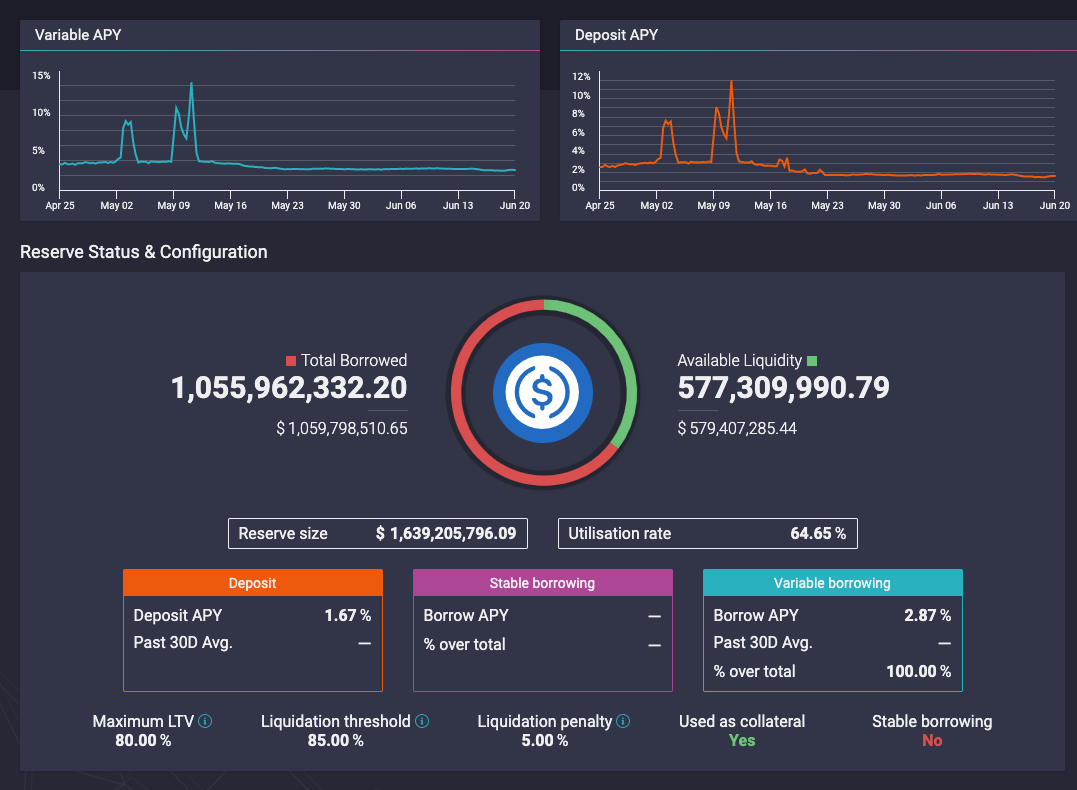Liquidity Mining on AAVE
Let’s use the rates illustrated by the above screenshot taken on 15th June to compute rewards a prospective user can expect to receive.
Let’s say that a user called Sally wants to earn a passive income on $1000 worth of USD Coin (USDC). She deposits her USDC on AAVE to earn the deposit APY (1.66%).
In a year, Sally can expect to earn an interest of around $16 provided the interest rates remain constant.
However, as part of the rewards program, Sally additionally earns 2.23% on her investment in the form of MATIC tokens. Assuming the price of MATIC stays somewhat constant (around $1.5), she can expect to earn $22 in a year. That’s a 100% increase in the income earned!
Now, let us assume that Sally wants to borrow some crypto capital by collateralizing her deposits. AAVE allows users to borrow up to 80% of the total value locked (TVL) for the USD Coin (See image below). This means that Sally can borrow up to $800 worth of USD Coin for the $1000 worth of USD Coin deposited.

Let’s say she opts for a slightly conservative amount to borrow and ends up borrowing $500 or 50% TVL.
Now, Sally incurs an interest rate of 2.87% on the $500 she borrowed. This amounts to about $14 that she has to repay in interest in a year.
However, due to liquidity mining incentives, she earns rewards for borrowing assets. She earns 3.46% (around $17) in MATIC tokens for borrowing USDC.
Thus, the total money she makes on the entire exercise of borrowing + lending is:
$16 + $22 - $14 + $17 = $41
This is the power of DeFi! By earning rewards, our user’s passive income has vastly increased.
Nonetheless, investors must be careful when using DeFi protocols as they do carry risks.
Don’t Get Liquidated
You may have noticed the term liquidation threshold in the image above. This is the threshold ratio that users must maintain when borrowing assets against the collateral to avoid liquidation a.k.a. losing money.
For example, let us say that instead of USDC, Sally borrows WETH (wrapped Ethereum). Since WETH is a more volatile asset than USDC, a rise in its price may liquidate her position.
NOTE: Always be watchful of your health factor metric when borrowing assets.
In Sally’s case, she borrowed USDC against USDC. Both of them are relatively stable assets. Hence, her risk level is quite low.













